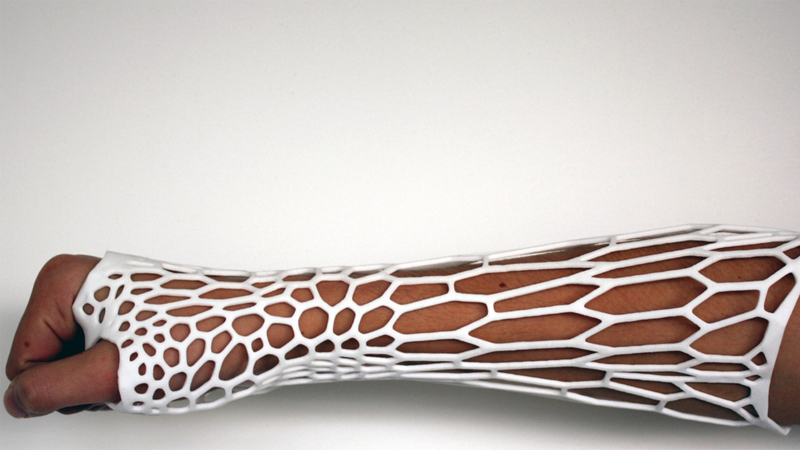“Gentlemen, we can rebuild him. We have the technology.” Even people who weren't yet born when it first aired on T.V. in 1974 know those iconic sci-fi words from the . And today, we really do “have the capability to make the world's first bionic man.” In fact, we already have. We're still working out the “better, stronger, faster” bit, but when it comes to rebuilding humans, we're kicking ass, and that's good news for outdoor athletes.
Let's start with a definition. The word bionic is sort of a portmanteau. It's basically the melding of bio– from biology, and onic from electronic. People tend to play a little fast and loose with the definition, often stretching it to mean technologically enhanced, rather than strictly electronically enhanced, but however you definite it, it's a field that’s progressing at an incredible rate right now.
Say you wipe out on your mountain bike and come away with a broken forearm. Tradition would have us wrap it in layers of fabric and heavy, bulky plaster, where your arm would basically suffocate while it healed for a month or two. Got an itch? Want to go for a dip in the pool? Too bad.
In the near future, though, your bum arm may simply be scanned and a breathable, lightweight could be made in two pieces that snap together. Not only would it give you the most badass tan-lines ever, but the porous design allows for the attachment of an ultrasonic pulse generator (impossible with plaster casts) that may help to “reduce the healing process up to 38 percent and increase the heal rate up to 80 percent in non-union fractures,” according to the description. Plus, it looks way cooler and would be much less susceptible to rancid funkiness.

Or say you managed to seriously screw up your knee on the slopes. Relearning how to walk (or even just regaining basic mobility) is extremely difficult during rehab, which is why the offers so much promise. . It's essentially a full-leg brace with lots of motors and servos inside it that provide motorized assistance with both extension and flexion.
The amazing part is that the bionic leg can sense what you're trying to do through a pressure sensor under your foot, and react instantly. It provides lift when climbing stairs and resistance when you're sitting down so you don't fall into a heap. Plus, it's fully adjustable, so you can slowly take more weight as you progress in your recovery. No, it doesn't let you run at supersonic speeds (or run at all, yet), but it allows you to move without having to compensate in ways that could hinder your rehab. So you can slowly build up your strength by doing things you normally do, while still maintaining good form.
While we're not yet at the point of using these systems to leap tall buildings, you can bet that people are looking beyond restoring function and on to adding super-human capabilities.
But what if something even more extreme happens? What if, say, you lose a limb? The way tech is now that doesn't have to be the end of your athletic career. Take developed by researchers at the Rehab Institute of Chicago. Not only does it allow a man to walk and go up and down stairs, it also allows him to do it at normal walking speed. If you watch him from the waist up, you'd never even notice a limp.
Or how about , which intertwines with nerves left intact on a limb. This allows for direct sensory feedback for amputees (think Luke Skywalker's hand), so users can sense resistance and pressure when they’re gripping or manipulating objects—something we thought was impossible less than a decade ago.
Perhaps most impressively, take the example of Amanda Boxtel, a skier who was paralyzed from the waist down in a 1992 accident. Now, for the first time, she's walking again, thanks to a 3-D printed robotic exoskeleton that was molded to fit her body.
So while we're not yet at the point of using these systems to leap tall buildings in a single bound, you can bet that people () are looking beyond just restoring function and on to adding super-human capabilities. We may not get to Elysium within our lifetimes, but don't be too surprised if you live to see the world record for the 100-meter dash get smashed by a pudgy guy in an exoskeleton.


